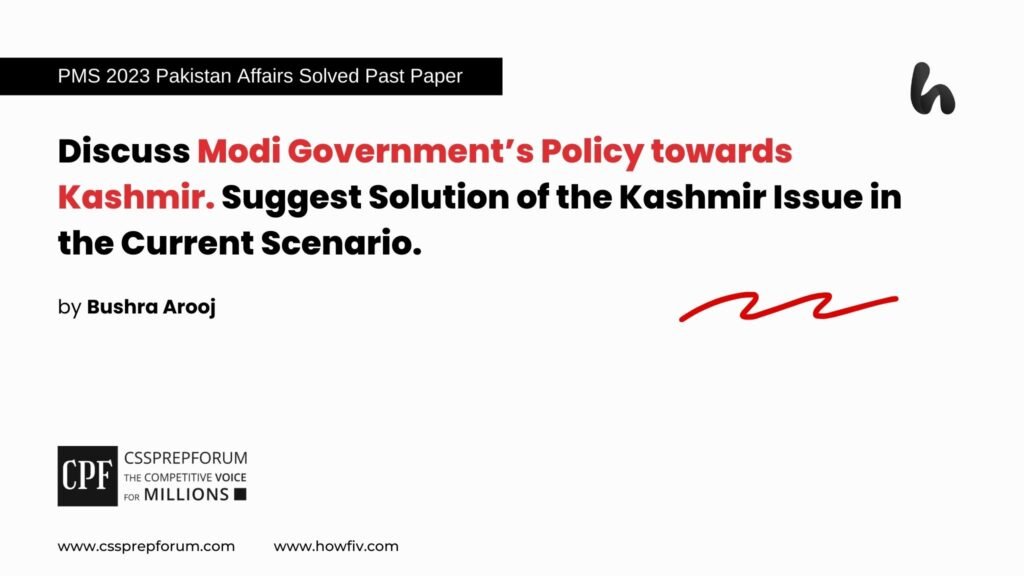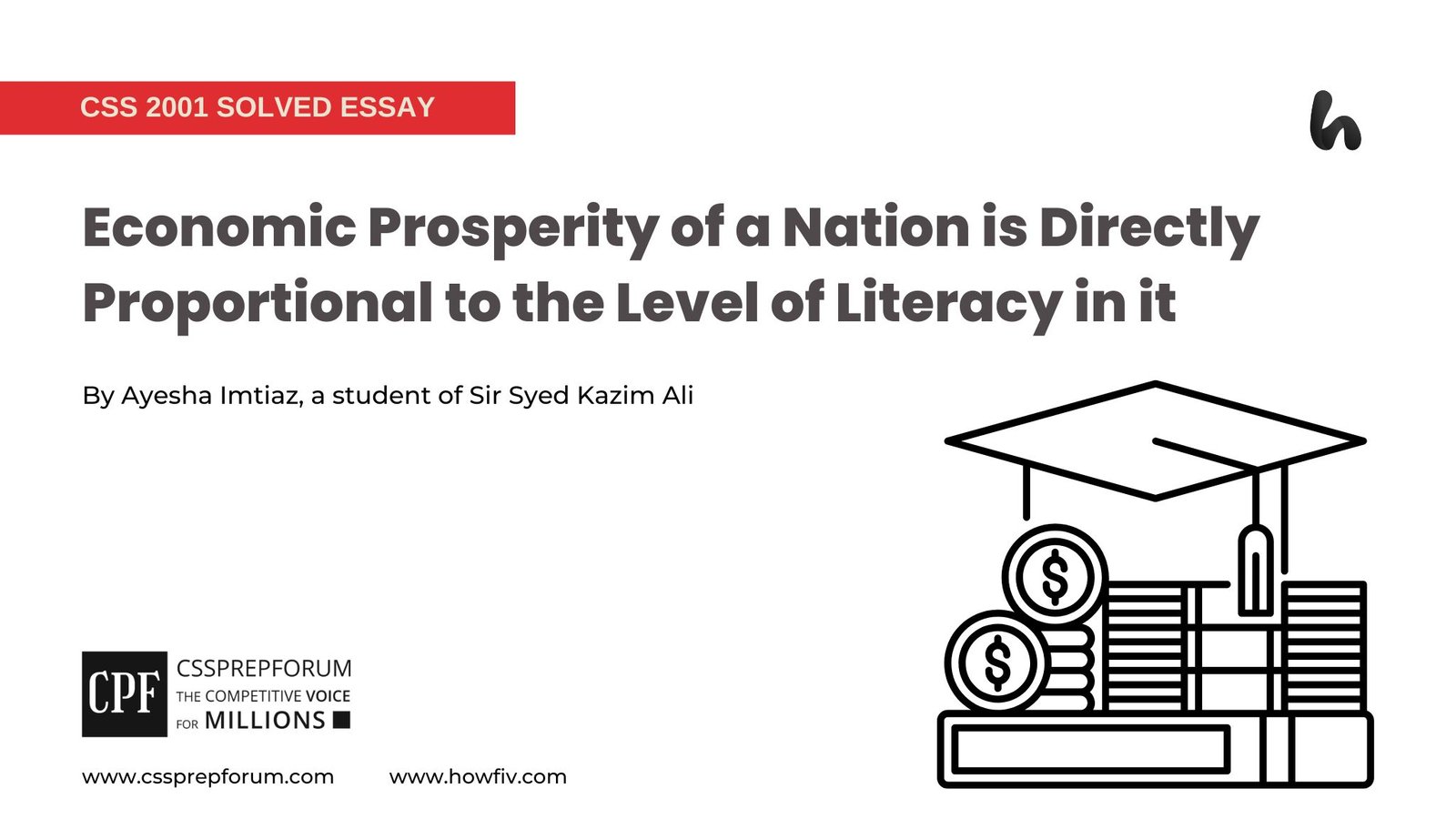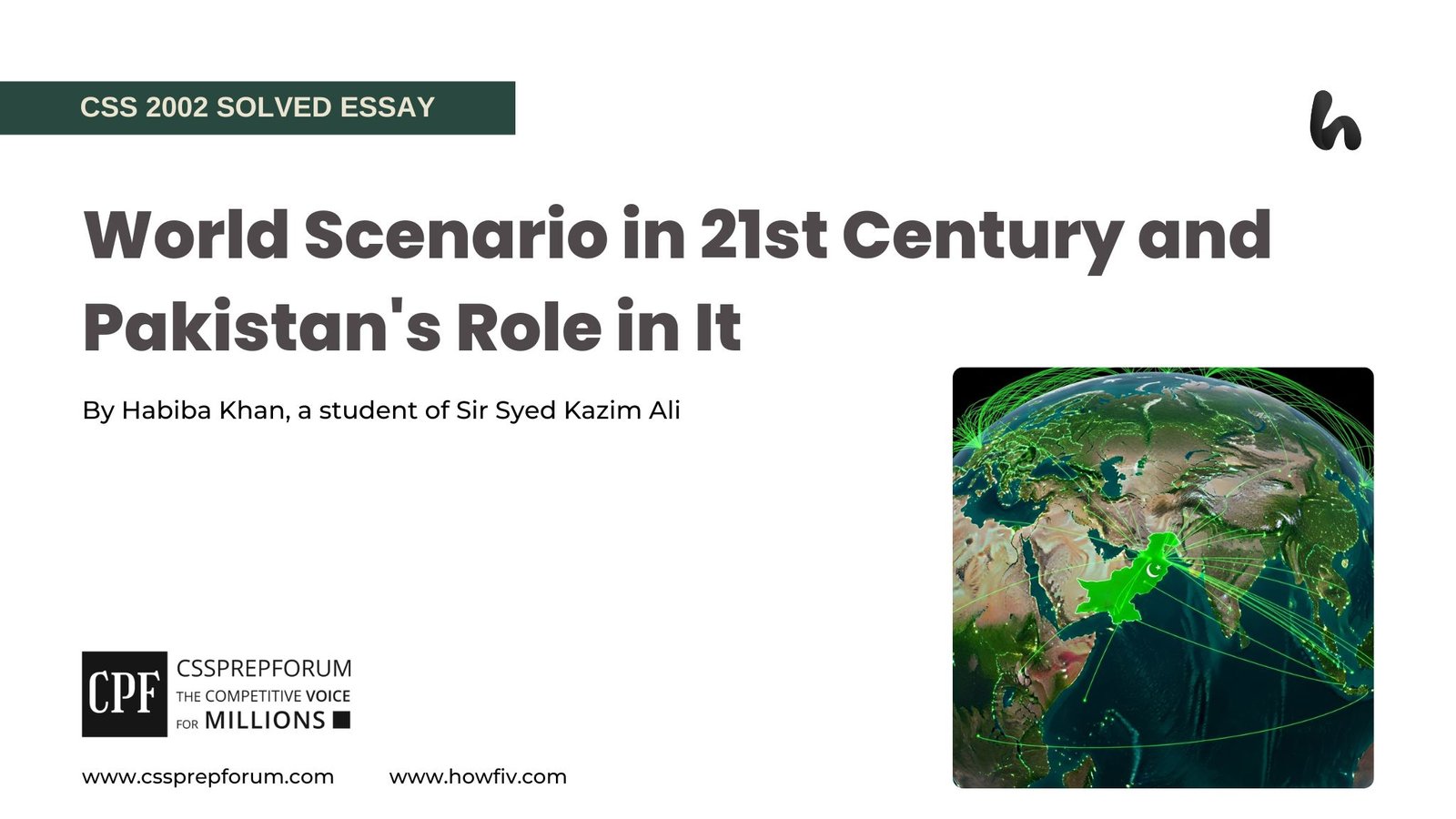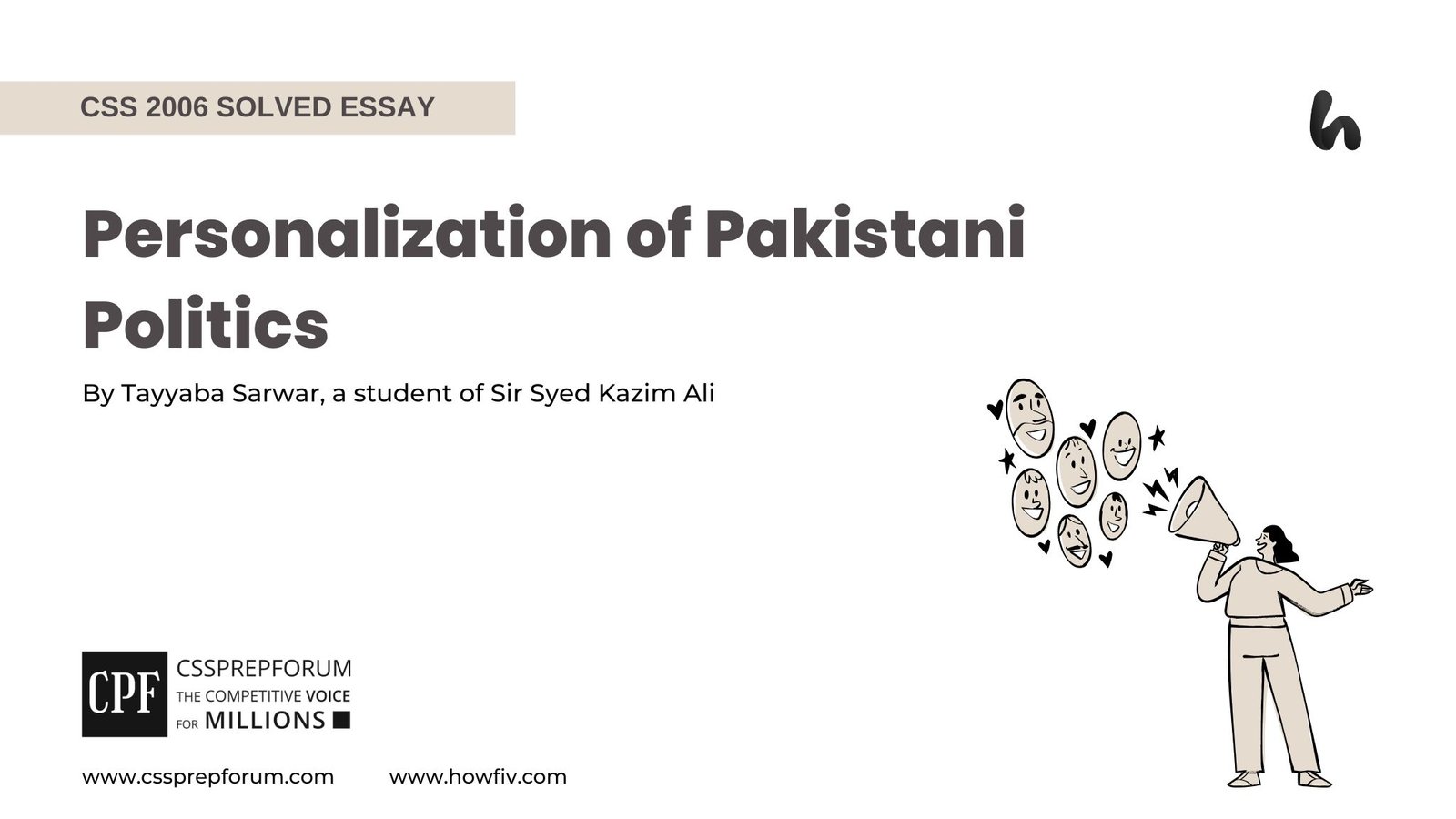PMS 2023 Solved Pakistan Affairs Past Papers | Modi Government’s Policy towards Kashmir and its Solution
The following question of PMS Pakistan Affairs 2023 is solved by Miss Bushra Arooj, the best Pakistan Affairs Coach, on the guided pattern of Sir Syed Kazim Ali, which he taught to his students, scoring the highest marks in compulsory subjects for years. This solved past paper question is uploaded to help aspirants understand how to crack a topic or question, how to write relevantly, what coherence is, and how to include and connect ideas, opinions, and suggestions to score the maximum.

Question Breakdown
The question requires an assessment of Modi’s government policies for Kashmir through their impact on the existing context. The discussion examines possible solutions regarding Kashmir from Pakistan’s viewpoint. It also demands analysis of Indian government actions particularly the Article 370 revocation alongside assessing these decisions ramifications for Kashmir along with its impact on Indian-Pakistani ties. The identification of solutions that address the Kashmir issue must include analysis of the current difficult political and diplomatic landscape.
Outline
1-Introduction
2-The lingering Kashmir issue between India and Pakistan
3-Narendra Modi’s Government and His Key Policies towards Kashmir
- ✓Revocation of Article 370 and the Reversal of Jammu and Kashmir Autonomy.
- ✓Military expansion and heightened security protocols in Kashmir.
- ✓The Reorganization Act: redrawing Jammu and Kashmir’s Political boundaries.
- ✓Silencing Kashmir with Media censorship and Communication Blockades.
4-Kashmir and Applicable Solutions
- ✓Reversing the revocation of Art 370 and Restoration of Kashmir’s Autonomy by Legal Actions, Political Movements and International Diplomatic Pressure.
- ✓Leveraging Neutral Mediation and International Intervention to facilitate Dialogue, provide Economic and Humanitarian support and influence International Support.
- ✓Promoting Confidence Building Measures (CBM) can encourage Dialogue for Conflict resolution, diminish Hostilities and foster Economic and Cultural Co-operation.
5-Critical Analysis
6-Conclusion

Answer to the Question
Introduction
Since British India created two independent nations in 1947, the Kashmir issue stands as an enduring flashpoint between India and Pakistan. The dispute incorporates both conflicting claims about physical ownership and political questions alongside cultural disputes and long-standing historical disagreements. Multiple decades have passed as conditions have changed while Kashmir’s political independence and future continue to remain unaddressed. When Narendra Modi took power as India’s prime minister in 2014, his government initiated a fresh direction in Kashmir policy through a nationalistic posture that became more forceful. As the administrative leader of India’s Bharatiya Janata Party (BJP) Narendra Modi implemented ambitious yet controversial policies which target Kashmir most strongly due to the long-running struggle for self-governance. The Modi administration issued a major policy change when it removed Article 370 from the Indian Constitution in August 2019 to end Jammu and Kashmir’s special autonomic status. The political shift has sparked significant national and international disputes. The Indian government policies in Kashmir, especially Article 370 termination, alongside the region’s ongoing military occupation and wider social and political combats, have major consequences. The solutions required address Kashmir’s ongoing conflict based on shifting geopolitical frameworks and support Kashmiri citizens’ basic aspirations for a sustainable and just settlement of the Kashmir dispute.
The Lingering Kashmir Issue between India and Pakistan
Historically, India and Pakistan have been engaged in a lengthy dispute over Kashmir since British India experienced its partition in 1947. In 1947, when British India split into India and Pakistan, the princely state Jammu and Kashmir had an opportunity to choose between joining India or Pakistan. Although dominated by Muslim residents, the Kashmiri region announced its accession to India while being governed by Maharaja Hari Singh. By selecting India as its new country, the princely state of Jammu and Kashmir triggered a first war between 1947 and 1948 that ended in a UN-mediated truce, establishing the Line of Control (LoC) as Kashmir’s dividing line. Throughout decades, The Kashmir conflict produced multiple wars with numerous skirmishes and violent insurgencies. India considers Jammu and Kashmir part of its official territory, yet Pakistan seeks a UN resolution to determine the region’s status through popular vote. Despite several peace dialogues together with diplomacy and international mediation attempts, Kashmir remains stuck in an unsettled state with no foreseeable solution. Since India eliminated Kashmir’s constitutional autonomy via Article 370 revocation in 2019, these tensions sharply increased. A volatile state of affairs persists in Kashmir since India, alongside Pakistan, now struggles to determine Kashmir’s political fate while its local population bears the effects of this enduring conflict.
Narendra Modi’s Government and his Key Policies towards Kashmir
- ✓Revocation of Article 370 and the Reversal of Jammu and Kashmir Autonomy.
Narendra Modi’s government triggered a fundamental policy transformation towards Jammu and Kashmir when they abrogated Article 370 in August 2019. Article 370 established unique authority in Kashmir by affording exceptional autonomy that empowered the region to write its own constitution, wave its own flag, and run its governance independently through internal matters in return for Indian government oversight of defence and foreign policies along with financial operations and communication systems. India’s Constitution created this distinctive legislative framework as part of its plan to protect Kashmiri autonomy when it chose to join India’s territorial obligations in 1947. Modi’s government abolished Article 370 to merge Jammu and Kashmir fully into India, leaving its autonomy behind. Through this reform, the government converted the state into two central Territories before asserting direct control. The Indian government legitimized this decision through its stated mission to conduct national integration while promising both economic development and reduced militancy. Pakistan considered the decision illegal because it tried to modify Kashmir’s disputed standing, yet numerous Kashmiri residents experienced it as a militant attack against their political independence and self-government.
- ✓Military expansion and Heightened security protocols in Kashmir..
Under Narendra Modi’s government, military operations alongside security enhancements in Kashmir have become the most controversial elements of Kashmir policy. After Article 370’s revocation in 2019, the Indian government sent vast armed forces numbering in the tens of thousands to rule and silence Kashmir’s opposition. The Indian government supported increased military measures by citing the need to fight terrorism, block border crossings, and preserve law and order throughout a stability-challenged region that experienced decades of armed conflict. The Indian government expanded military forces while strengthening security protocols through intensified surveillance practices alongside intensified counter-insurgency operations. Indian authorities consistently depend on paramilitary units and unconventional security operations through the exploitation of the Armed Forces Special Powers Act (AFSPA). This law gives soldiers complete powers to make arrests without warrants and carry out missions outside official oversight. Expansive security measures adopted by the Indian state to maintain peace did not resolve the trust gap which continues to grow between Kashmiri populations and their government.
- ✓The Reorganization Act: redrawing Jammu and Kashmir’s Political boundaries.
Through the Jammu and Kashmir Reorganization Act of 2019, Narendra Modi’s government undertook the major policy move to redraw Jammu and Kashmir’s (J&K) political borders. The Reorganization Act reorganized (fig 1.1 and 1.2 show the state of Kashmir before and after the reorganization act) the state of Jammu and Kashmir into two separate Union Territories: Ladakh (without a legislative assembly) and Jammu and Kashmir (with its legislative assembly). The fundamental restructuring of the political environment changed the entire region deeply affecting governance structures as well as regional autonomy and political participation standards. Under the new Act, the region received administrative reorganization, which surrendered local governmental power through the implementation of central government oversight bypassing state governance structures. The move sought to align Kashmir and Ladakh authorities closely with other Union Territories and states throughout India with the purpose of strengthening the central government’s control.


The divisions established by the Reorganization Act weaken Pakistan’s spiritual heritage by both damaging its self-governance status and causing the loss of past political liberties of its residents. The act created stronger social and political differences in the region. Pakistan, along with international entities, expressed worry about the Act’s consequences for regional peace.
- ✓Silencing Kashmir with Media censorship and Communication Blockades
Under the Narendra Modi government, media censorship combined with blocked communications has emerged as a core element in response to Kashmir. The Indian government imposed restrictive measures on press freedom and communication access throughout Jammu and Kashmir after ending Article 370 and conducting territorial reforms. The government enforced several measures after Article 370’s removal, including shutting down internet access altogether, disrupting cellular phone service, and shutting down local news companies that criticized government decisions. The governmental imposition of limited communications functioned because of public order maintenance and unrest control. This policy received criticism because it choked off Kashmiri people’s ability to express themselves while simultaneously violating their democratic entitlements in their homeland. The media blackout in Kashmir functions as an instrument to silence opposing voices while it restricts regional residents and international observers from experiencing actual conditions in the area. The region’s independent journalists and news media agencies experience harassment through intimidation and face arrest and barriers to reporting activities. The communication blockade blocked regular Kashmiri residents from using their right to speak out and engage in public dialogue. International rights organizations and global bodies extensively criticized the Indian government’s security-based rationale which opposes freedom of speech and information access rights.
Kashmir and Applicable Solutions
- ✓Reversing the revocation of Art 370 and Restoration of Kashmir’s Autonomy by Legal Actions, Political Movements and International Diplomatic Pressure.
India’s August 2019 revocation of Article 370 drained Jammu and Kashmir of its self-governance capacity, resulting in major opposition around the world. As an important player in the Kashmir conflict,t Pakistan needs to fight for Kashmiri rights through political activism, international engagements and legal challenges. Political activism by Pakistan should target international legal frameworks, including the United Nations Security Council (UNSC) resolution advocacy to reveal the unlawful nature of India’s unilateral decisions. International recognition of Pakistan’s position strengthens through emphasizing revocation violations of existing bilateral agreements, including the Simla Agreement. Through The International Court of Justice (ICJ), a legal challenge exists to dispute India’s violation of international law. Evidence highlighting human rights abuses in Kashmir through details about media restrictions and increased military presence will make Pakistan’s position stronger during court proceedings. Through diplomatic channels Pakistan has the ability to apply direct pressure toward India. England and members of the Organization of Islamic Cooperation (OIC) must join forces with Pakistan to establish solidarity for Kashmir’s opportunity to choose its political future. Pakistan should model its approach after global protests using both diplomatic and economic penalties against India to force policy changes in Kashmir.
.
- ✓Leveraging Neutral Mediation and International Intervention to facilitate Dialogue, provide Economic and Humanitarian support and influence International Support.
As part of Pakistan’s diplomatic initiative, the Kashmir issue can be resolved through neutral mediation supported by international intervention. Pakistan’s engagement with neutral international bodies would establish a dialogue space to forge productive talks between India, Pakistan and Kashmiri people together with resolving economic challenges and humanitarian crises. The government of Pakistan should work to bring Norway and Switzerland into the mediation process to help negotiate discussions between India and Pakistan. The Oslo Accords, serving as an example, demonstrate that neutral mediators successfully establish dialogue within severely divided conflicts. Multinational bodies such as the United Nations and the Organization of Islamic Cooperation (OIC) should be leveraged by Pakistan to boost worldwide pressure on India. Multiple times, the United Nations has confirmed in its resolutions on Kashmir that Kashmiri people deserve their right to decide their own future. Pakistan needs to make effective economic and humanitarian aid for Kashmiris. The worsening human rights conditions in Kashmir can increase global organizational and state interest in Kashmir’s residual problems by demonstrating communication and freedom limitations. The Kashmir cause gained international visibility through campaigns managed by organizations, including Amnesty International and Human Rights Watch, who created a platform for robust worldwide advocacy. Pakistan’s international support should focus on diplomatic coordination with China, Turkey and Middle Eastern countries to increase its political power. Pakistan positions Kashmir for global recognition as an international humanitarian issue that will generate international backing for prompting neutral oversight during negotiations with India.
- ✓Promoting confidence-building measures (CBM) can encourage dialogue for conflict resolution, diminish Hysteria, and foster economic and cultural cooperation.
As a vital instrument, Confident Building Measures (CBMs) foster dialogue and diminish hostilities that India and Pakistan face over Kashmir. The implementation of Confidence-Building Measures generates conditions of mutual trust to support productive dialogue while promoting cultural partnerships and economic development both leading to conflict resolution. People-to-people connections form an effective CBM strategy, and cross-border exchanges, including family reunification events and cultural activities, generate mutual connections that strengthen relations between Kashmir residents and citizens of India and Pakistan. Through “Aman Ki Asha” media groups in India and Pakistan have established as a peace program that demonstrates cultural collaboration’s ability to transform these conflicts into more humane experiences while diminishing tensions between the nations. The execution of joint trade ventures, specifically across Line of Control (LoC) territories, generates mutual economic advantages and strengthens interdependence. Industrial zones adjacent to the Line of Control allow Kashmiris to earn income and forge relationships between India and Pakistan. Bilateral trade based on barter across the Line of Control served as historic groundwork for economic cooperation that require continued growth for economic development. Military transparency is also essential to abstain from moving heavy weapons to the LoC zones together with exchanging information about ongoing military exercises , whichserves to lower border tensions. A revitalized version of the 2003 ceasefire agreement presents an opportunity to move forward with larger negotiations because it performed well in reducing tensions for several years. The free operation of NGOs in Kashmir constitutes humanitarian measures that facilitate good relationships. When countries unite to manage regional health crises and address educational gaps and natural disaster response, these programs generate shared objectives and minimize hostile relations. To foster meaningful youth dialogue cultural initiatives should include peace sports tournaments along with joint academic projects. Support from political leadership backs initiatives that decrease hostile tensions, thereby creating a sustainable solution for the Kashmir dispute. As a functional strategy, CBMs help build trust between actors through practical initiatives.
Critical Analysis
The ground realities in Kashmir have grown harder under Modi’s leadership, thereby complicating prospects for peaceful resolution. India lost Kashmiri population support after removing Article 370 while Indian representatives continue to disclaim disturbances in Kashmir. A pragmatic strategy, along with multiple approaches, needs to be adopted by Pakistan. The United Nations, together with trustworthy neutral parties, should host international discussions about the matter to create meaningful pressure on India. To strengthen its argument, Pakistan must demonstrate exemplary behaviour by focusing on economic prosperity together with political serenity and regional partnership maintenance. The Kashmir dispute needs statesmanship instead of dangerous brinkmanship from India and Pakistan. A resolution with sustainability requires that Kashmiris must be heard through structured dialogues which foster mutual trust and respect.
Conclusion
The Kashmir dispute, which India and Pakistan have been fighting about, intensified during Modi’s rule because he enacted both Article 370’s revocation and raised military presence while restricting media freedoms. Through these actions, the situation worsened, resulting in more regional turmoil while violating human rights standards and aggravating the Kashmiri population’s disconnection from their home. Immediate solutions are required to support Kashmiri’s rights while creating peace throughout South Asia. Kashmiri’s hopes must remain at the core of any final Kashmir resolution. The successful resolution of decades-long hostility needs mutual respect as well as trust enhancement and open dialogue among communities. Both nations, together with the entire region, stand to benefit from a resolution that promotes peaceful coordination and fair treatment. Advancing peace takes precedence above all political gains.
CSS Solved Past Papers’ Essays
Looking for the last ten years of CSS and PMS Solved Essays and want to know how Sir Kazim’s students write and score the highest marks in the essays’ papers? Then, click on the CSS Solved Essays to start reading them.
CSS Solved Essays
CSS Solved General Science & Ability Past Papers
Want to read the last ten years’ General Science & Ability Solved Past Papers to learn how to attempt them and to score high? Let’s click on the link below to read them all freely. All past papers have been solved by Pakistan’s top CSS GSA coach having the highest score of their students.
General Science & Ability Solved Paper












